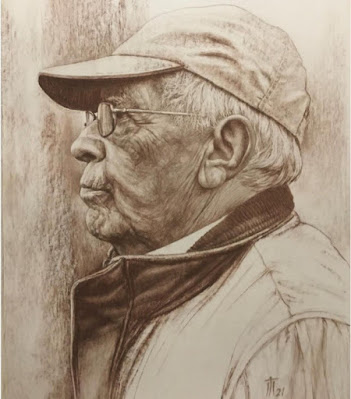Sepia
Thanks to the smartphone and all its apps with filters to apply on your photos, everyone’s heard of “sepia”. Here’s a pic with the sepia effect:
Sepia is a 130
year-old technique (!) of using a toner while developing photographs. It only works on black and white photos:
“The
print is first soaked in a potassium ferricyanide bleach to reconvert the
metallic silver to silver halide. The print is washed to remove excess
potassium ferricyanide and then immersed into a bath of toner, which converts
the silver halides to silver sulfide.”
The outcome is
lots of shade of brown, but ultimately, it’s all brown and white. Therefore,
technically speaking, sepia is still a monochromatic image.
Why did this
method evolve? For aesthetic and practical reasons. It gives the pic a slightly
warmer effect. And because of those chemicals involved in the different steps,
the outcome is a photo which is more resistant to exposure to the elements.
Longer lasting photos, in other words.
While analog
photography may be on the decline, the style called sepia is very popular as a
filter to apply via that photo editing app on your smartphone.
And now it’s even a style of artwork. The pic above, for example, is an artwork, not a photograph! By a guy named Tariel Zhorzholiani. Imagine that: a style of developing ancient B&W photos has become now an artform in the age of 24-bit colors. The wheel has come full circle!

Comments
Post a Comment